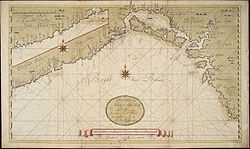| Place in West Africa | Est. | Disest. | Comments |
|---|
| Offra (Pla, Cleen Ardra, Klein Ardra, Offra) | 1660 | 1691 | As the original head trading post at the Dutch Slave Coast, Offra was established in 1660. According to a 1670 report, 2,500 to 3,000 slaves were transported annually from Offra. Due to the Dutch siding with the Aja in the local political struggles, the fort was destroyed in 1692. [3] |
| Allada (Ardra, Ardres, Arder, Allada, Harder) | 1660 | ? | According to sources, the Dutch West India Company began sending servants to Allada, the capital of Ajaland, already in 1640. In some sources, Allada is referred to as "Grand Ardra", to contrast it with "Little Ardra", which is another name for Offra. [1] |
| Benin City | 1660 | 1740 | In contemporary Nigeria. |
| Grand Popo | 1660 | ? | |
| Savi (Sabee, Xavier, Savy, Savé, Sabi, Xabier) | 1660 | ? | In the beginning of the 18th century, the Dutch had a small trading post in Savi (capital of the Kingdom of Whydah), next to the Royal Palace. Compared to the English and French trading posts, the Dutch post was rather minimalistic in nature. [14] |
| Ouidah (Fida, Whydah, Juda, Hueda, Whidah) | 1670 | 1725 | Ouidah was a center for slave trading on the slave coast. In 1703, Governor-General of the Gold Coast Willem de la Palma sent Jacob van den Broucke as "head merchant" to Ouidah in 1703. Abandoned in 1725, in favour of the post at Jaquim, due to political unrest at the Slave Coast. [5] |
| Agathon (Aggathon, Agotton) | 1717 | ? | The trading post at Agathon, in contemporary Nigeria, was situated on a hill on the banks of the Benin River (also: Rio Formoso). Agathon was an important post for the trade in clothes, especially the so-called "Benijnse panen". In 1718–1719, the post produced 31,092 pounds of ivory. [15] |
| Jaquim (Jaquin, Jakri, Godomey, Jakin) | 1726 | 1734 | One of the most successful post at the slave coast. Became the head post after Ouidah was abandoned in 1725. In 1733 Fort Zeelandia was built here, but two years later, the directors of the Dutch West India Company decided to shift the slave trade to Elmina Castle, where slaves were cheaper. [7] |
| Aného (Petit Popo, Little Popo, Klein Popo, Popou) | 1731 | 1760 | Little Popo, also known as Aného, was the most westerly post on the Slave Coast. Due to this, the post suffered from competition of the Danish Africa Company, based at the Danish Gold Coast. [16] |
| Appa 1 | 1732 | 1736? | The island of Appa lies to the east of Offra. To this island, Hendrik Hertog, the merchant at Jaquim, fled in 1732 when he sided with the defeated party in a local conflict. On this island, a new trading post was founded, which was supposed to replace Jaquim. Appa and rebuilt Jaquim, now known as Fort Zeelandia, became a prominent centre of slave trade for some time, until 1735, when the Dutch West India Company decided to shift slave supply to Elmina on the Gold Coast. Hertog fled to Pattackerie in 1738, fearing that Appa would be attacked by local tribes as well. [17] |
| Appa 2 (Epe, Ekpe) | 1732 | 1755? | Appa 2 is the name used in some literature to refer to the trading post Hendrik Hertog fled to from the island of Appa, east of Offra. He named the new post Appa as well, but this post was situated near Pattackerie (contemporary Badagri). [18] |
| Badagri (Pattackerie) | 1737 | 1748 | Referred to on the Atlas of Mutual Heritage as a separate trading post distinct from "Appa 2", also located at Badagri. It is unsure whether there were two separate trading posts in reality, or that the posts are one and the same. [19] |
| Meidorp (Meiborg) | ? | ? | Meidorp was situated at the River Benin (also: Rio Formoso). It was a simple lodge, named by Dutch traders. It was abandoned after the last merchant named Beelsnijder turned the local population against him, due to his tactless approach towards them. [20] |



